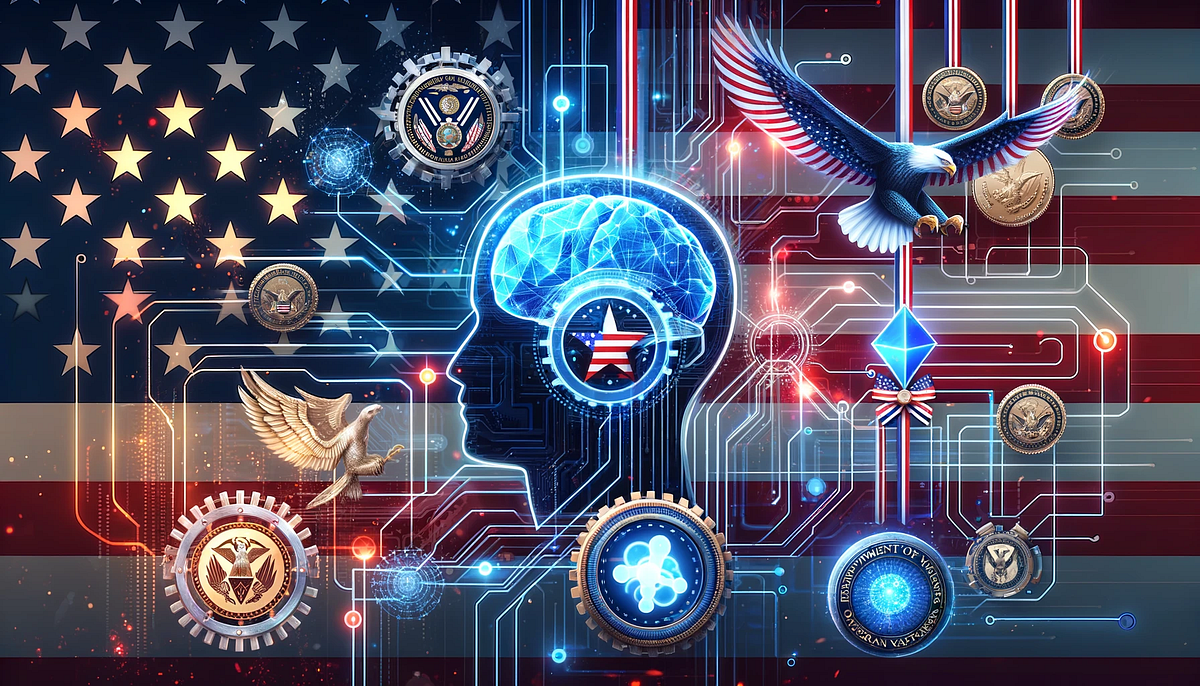The Department of Veterans Affairs (VA) stands at the forefront of a critical mission: serving those who have served. Despite its noble goals, the VA often faces challenges related to outdated technology and cumbersome file management systems, leading to inefficiencies and delays. However, the advent of blockchain technology and artificial intelligence (AI) offers a promising solution. This article delves into how integrating these technologies could transform the VA, ushering in a new era of efficiency, transparency, and improved veteran care.
The Blockchain Promise: Secure, Efficient, and Transparent Operations
Blockchain technology provides a decentralized, immutable, and transparent ledger system, which presents a unique opportunity for the VA to revamp its data management:
Secure and Immutable Record Keeping: Blockchain’s secure ledger system could protect sensitive data, significantly reducing the risk of data breaches and tampering.Streamlined Data Sharing and Interoperability: By enabling secure and efficient data sharing across various departments, blockchain can improve coordination of care and dismantle existing data silos.Enhanced Claims Processing: Utilizing smart contracts, blockchain could automate and streamline the claims process, reducing delays and manual errors.Revolutionized Supply Chain Management: Blockchain can provide end-to-end traceability in the supply chain, enhancing inventory management and preventing counterfeit products.Innovative Identity Management: Blockchain for identity management ensures that only authorized personnel can access sensitive information, bolstering data privacy and security.AI Integration: A Catalyst for Innovation
Integrating AI with blockchain could further enhance the VA’s operations in several ways:
Intelligent Requirements Gathering: AI can analyze extensive data sets to streamline the development process for blockchain solutions.Automated Medical Records Management: AI can process information from various sources, ensuring comprehensive and accessible medical records on the blockchain.Streamlined Claims Processing: AI algorithms can facilitate automated decision-making within the blockchain framework, expediting the claims process.Enhanced Supply Chain Oversight: AI can monitor inventory levels in real-time, triggering automated blockchain processes for efficient supply chain management.Robust Identity Verification: AI-powered biometric systems can enhance the blockchain’s identity management for secure and seamless verification.Implementation Roadmap: From Vision to Reality
A structured and phased approach is essential for integrating blockchain and AI within the VA:
Stakeholder Engagement: Initial consultations with veterans, healthcare providers, and technology experts to identify needs and challenges.Pilot Projects: Testing blockchain and AI solutions in controlled environments, allowing for iteration based on feedback.Comprehensive Training: Developing training programs for VA personnel and stakeholders to ensure smooth adoption.Continuous Monitoring: Using AI to continually assess the performance of the blockchain system, ensuring ongoing improvement.Towards a Future of Enhanced Veteran Services
The integration of blockchain and AI into VA operations represents a shift towards more secure, efficient, and transparent veteran services. This initiative promises streamlined processes and the highest data security standards, setting a new standard for veteran care. The path forward requires careful planning, collaboration, and a commitment to innovation, with the VA leading the way in adopting these transformative technologies.
This article was originally published by a medium.com . Read the Original article here. .

